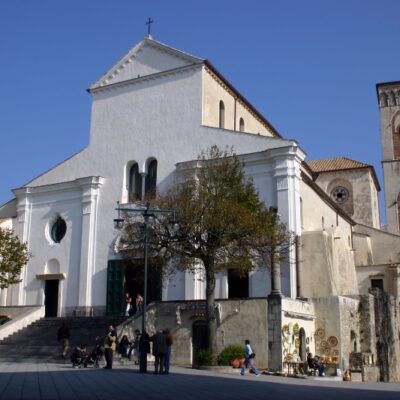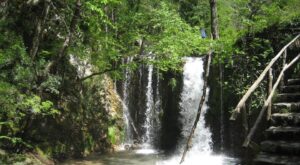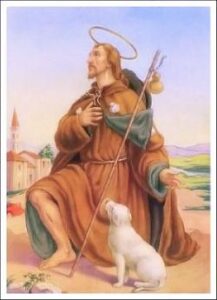MUNICIPALITY: Ravello
NAME: Duomo (formerly the Cathedral) of St. Mary of the Assumption
LOCATION: Piazza Vescovado
DESCRIPTION: The Duomo, dedicated to Our Lady of the Assumption, preserves the precious relic of the town’s patron saint, St. Pantaleone, a relic consisting of the blood shed by the martyr, preserved in an ampulla, and subject to the liquefaction on the anniversary day of his martyrdom, July 27.
Architecturally, this structure shows many building phases that a careful restoration, which lasted for decades, has attempted to study and reduce in the architectural results produced. This description is intended to be informative only, for all architectural and historical aspects in their evolution please refer to the bibliography.
Latin-crossed, three-aisled, the apsidal church shows a plan with Paleochristian features, including the ascending inclination of the floor level; the naves are divided by round arches standing on columns with spolia capitals.
The transept, elevated from the part reserved for the people, has in the central apse a seventeenth-century polychrome marble altar, preceded by four steps, and a mensa, of postconciliar type, consisting of a sarcophagus from the medieval period (1362), with inscriptions of the names of the first eight bishops of Ravello (Ravello was an episcopal see from 1086 to 1818, which is why the cathedral is also called the former cathedral).
The naves are covered by an exposed wooden truss for the central one and two cement half trusses for the lateral ones; the transept is covered, however, by a lunetted (lunettata*) barrel vault, interrupted in the central part by a bowl-shaped dome. The apsidal basin is decorated with Baroque motifs, as are the pilasters with stucco capitals decorating the transept.
The right apse houses the 1795 marble altar, on which stands a large rectangular altarpiece showing the Archangel Michael as he hits the devil, a 1583 work by Giovan Angelo D’Amato of Maiori; on the central apse, a niche contains the 18th-century wooden statue of the Madonna Immacolata, while the left apse was enlarged to make room in 1618 for the construction of the chapel to house the Saint’s relic, kept on the high altar until then.
A large marble altar contains, above the Tabernacle, a small compartment where the ampulla with the blood is placed between two grates; above it, a canvas dated 1638, by the artist from Genova Geronimo Imperiale, depicts St. Pantaleon tied to an olive tree trunk and the priest Ermolao (the one who converted the previously pagan saint to Christianity); two smaller canvases on either side depict St. Barbara and St. Thomas the Apostle.
The entrance sub-arch to the Chapel is divided into panels where scenes from the saint’s life are frescoed.
Three other important elements, from an artistic point of view, are preserved in the Cathedral: the bronze doors, the pulpit, and the ambo.
The bronze door consists of fifty-four panels arranged on the two wings and framed by geometric motifs; forty-two panels depict figures (from the Maiestas Domini to the Deposition of the Cross, the Tree of Life, the Madonna and the Divine Infant, etc.).
The entire structure, dating back to 1179, gifted from the nobleman Sergio Muscettola (as recalled by the inscription occupying one of the panels), was created by fusion by the artist from Trani called Barisano di Trani. The epistle ambo, from the left side of the central nave, was offered by Ravello Bishop Constantino Rogadeo no later than 1150 (he was in fact bishop from 1095 to 1150). The decoration, in mosaic, is defined in two registers: in the lower one, the motif of divine eternity is rendered by the use of two porphyry discs surrounded by a continuous spiral obtained with square marble tesserae; in the upper part, the mosaic scene reproduces the biblical episode of Giona, who was eaten and then vomited by a sea monster, a symbol of Christ’s Resurrection.
The pulpit, on the other hand, in the opposite nave, is a more articulated construction, resting in the balustrade part on columns, with capitals of the French school supported by six marble lions, shown in the act of walking. It was a gift of the nobleman Nicola Rufolo, built in 1272 by Nicola Bartolomeo da Foggia, and it shows spectacular mosaic decoration not only in the balustrade, where the Virgin and the Divine Infant (the pulpit is dedicated to the Virgin) and the family crests appear surrounded by fleurs-de-lis, but in every architectural element, which appears embellished with geometric and figurative motifs (the Phoenician Arabs at the fountain).
The crypt, above ground, with a cross-vaulted roof, is used as a museum.
Completing the Duomo is a three-register square bell tower with wide mullioned windows on all four sides defined by the decorative brick pattern; the crowning consists of blind tuff arches on twin columns.
SEE, VISIT, FIND: The Duomo is open daily from 8:30 a.m. to 7 p.m. (in summer also until 9 p.m.); during the early afternoon closing time it is accessible from the museum, so it can always be visited.
FRUITION DATA: None
OPPORTUNITIES: It is necessary to present the works preserved in the Duomo in other languages than Italian, as the interesting explanations placed near them are only in Italian. There is a tour guide service using audiovisual stations.
BIBLIOGRAPHY: (a c.) MARTINES R., Il Duomo di Ravello, Viterbo 2001.
FULCHIGNONI G., Ravello. Le cento chiese, Amalfi 2001
IMPERATO G., Ravello nella storia civile e religiosa, Cava d. T. 1990.
(a c.) GUGLIELMI FALDI C., Il Duomo di Ravello
MANSI L., Ravello sacra – monumentale, Ravello 1887.





